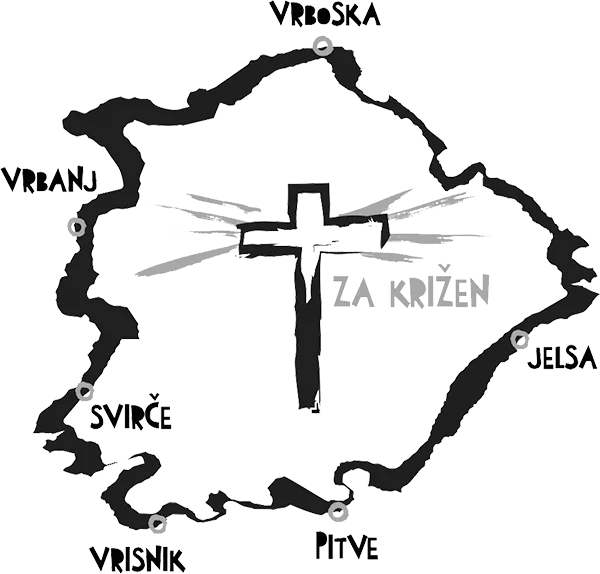Our Lady’s Lament and Holy Week Chants
In the parishes of central Hvar – Jelsa, Pitve, Vrisnik, Svirče, Vrbanj, and Vrboska – ritual chants rooted in the tradition of Glagolitic singing have been cultivated for centuries. They are performed by male traditional singers and transmitted exclusively through oral tradition, connected with the liturgical and paraliturgical practices of Lent and Holy Week.
At the centre of this repertoire stands Gospin plač (Our Lady’s Lament), a chant performed at the stations of the Za križen procession. Its textual source derives from the so-called Osor–Hvar Hymnal (Osorsko-hvarska pjesmarica) from 1533, which contains 723 double octosyllabic verses, while in current practice three stanzas (i.e. three double octosyllabic verses) are usually sung at each processional station.
The chant is performed by male singers – two kantaduri (lead singers) and three or four odgovoroči (responders) – in a dialogical exchange: the kantaduri sing the first stanza, the odgovoroči then respond with the second on the same melodic line, and after the joint singing and prayer of the faithful follows the third, again performed by the kantaduri. The chant is based on a series of melodic sequences separated by pauses, through which both the intensity of performance and intonational tension gradually increase, while the text, evoking the Virgin’s lament beneath the Cross over the suffering and death of her Son, carries a strong expressive charge. The performance is characterized by occasional microtonal inflections, freer rhythmic organization, and a manner of singing that gives the impression of a single voice, creating a specific sound colour. Such a structure and mode of performance make Gospin plač an exceptional example of Glagolitic monody, combining Western (Gregorian) and Eastern (Byzantine) influences.
Alongside Gospin plač, male traditional singers perform other chants that form the sound framework of Holy Week devotion: Plač Jeremije proroka (Lamentation of the Prophet Jeremiah), Smiluj mi se, Bože (Have Mercy on Me, O God), Klanjamo se teb’ Isuse (We Adore You, Jesus), Puče moj (My People), Barjaci kreću Kraljevi (The Royal Banners Forward Go), Oj propeti, muč’n’ Isuse (O Thou Crucified, Tormented Jesus), and others. Unlike Gospin plač, these chants are mostly based on a diatonic foundation, have a clearer metric–rhythmic structure, and are performed in the range from monophony to three-part, more rarely four-part singing. Each parish has developed its own variants, recognizable by melodic, rhythmic, and textual characteristics, confirming the continuity of oral transmission and the vitality of the Holy Week musical heritage.
